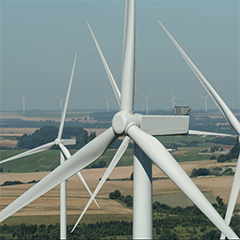On a European level, two significant breakthroughs were achieved in energy policy during the summer: the European target for the share of renewable energies in the electricity supply will be increased to 32 percent by 2030. In addition, EU-member states are obliged to submit detailed plans by the end of 2019 regarding the deployment of renewables to contribute to achieve the EU-wide target of 32 percent.
This includes a five years’ visibility on future auction timetable and volumes. Member states cannot change their energy policies on a year-to-year basis, hence more reliability can be achieved for the companies and capital cost can be reduced, due to less regulatory risk.
After the general election in Germany, it took quite a while to form a new government. An ambitious attempt to form a ‘Jamaica’-Coalition (Conservative-Black, Liberal-Yellow and Green) failed, so that a new version of the old government was formed by the Conservatives and the Social Democrats. Many hopes for an ambitious renewable, yet market-oriented energy policy were buried. In spite of the bleak expectations of most observers, the coalition agreement included some very ambitious cornerstones, such as a 65 percent target for renewable energies in the electricity sector, 4 GW extra volume for wind onshore, PV and a, not further defined, ‘contribution’ of offshore wind.
These targets of the coalition agreement in Germany and the EU’s new energy policy framework are in tune. The clarity and long-term visibility in EU-legislation is crucial for companies to invest in manufacturing, supply chain, skills as well as in research and development. What the industry needs now, is a stringent implementation in tender quantities and growth figures.
The path to 65 percent renewables is all but cleared: ongoing discussions about the interpretation and implementation of the wording in the coalition agreement between the parties keep up an extreme level of insecurity and jeopardize its success as a whole.



























